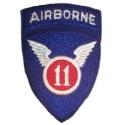
The airbase at Chiran, Minamikyūshū, on the Satsuma Peninsula of Kagoshima, Japan, served as the departure point for hundreds of Special Attack or kamikaze sorties launched in the final months of World War II. A peace museum dedicated to the pilots, the Chiran Peace Museum for Kamikaze Pilots (知覧特攻平和会館 Chiran Tokkō-Heiwa-Kaikan), now marks the site.
KASAMA, Japan – The pilots filed into the room and were presented with a form that asked if they wanted to be kamikaze. It was multiple-choice, and there were three answers: “I passionately wish to join,” ”I wish to join,” and “I don’t wish to join.” This was 1945. Many were university students who had been previously exempt from service, but now Japan was running out of troops.
Hisashi Tezuka recalls that a few of his colleagues quickly wrote their replies and strutted away. But he and most of the others stayed for what felt like hours, unable to decide.
He did not know then if anyone had dared to refuse. He learned later that the few who did were simply told to pick the right answer. Tezuka so wanted to be honest to his feelings he crossed out the second choice and wrote his own answer: “I will join. I did not want to say I wished it. I didn’t wish it,” he told The Associated Press at his apartment in a Tokyo suburb.
They were the kamikaze, “the divine wind,” ordered to fly their planes into certain death. The U.S. Strategic Bombing Survey and data kept at the library at Yasukuni shrine in Tokyo estimate that about 2,500 of them died during the war. Some history books give higher numbers. About one in every five kamikaze planes managed to hit an enemy target.
Books and movies have depicted them as crazed suicide bombers who screamed “Banzai” as they met their end. But interviews with survivors and families by The Associated Press, as well as letters and documents, offer a different portrait — of men driven by patriotism, self-sacrifice and necessity. The world they lived in was like that multiple-choice form: It contained no real options.
First-born sons weren’t selected, to protect family heirs in feudalistic-minded Japan. Tezuka, then a student at the prestigious University of Tokyo, had six brothers and one sister and wasn’t the eldest. He was given a five-day leave to visit his parents. He didn’t have the heart to tell them he had been tapped to be a suicide bomber. There was one absolute about being a kamikaze, he says: “You go, and it’s over.”
He survived only because Emperor Hirohito announced Japan’s surrender on a radio broadcast, just as he was on a train headed to take off on his kamikaze attack.
A burly man with a quick wit, Tezuka hands a reporter a sepia-toned photo of himself as a Zero fighter, grinning in a helmet, the trademark white silk scarf at his neck. “That’s to keep warm. It gets really cold up there,” he says.
“Do you know what a rainbow looks like when you’re flying?” he asks, his eyes aglow with childlike excitement. “It’s a perfect circle.”
Seventy years after the end of World War II, the runway that once stretched at Tsukuba is long gone. But the rows of cherry blossoms still stand. In another corner of the Tsukuba grounds, an underground bomb shelter winds in pitch darkness through several chambers. It was designed to serve as an emergency command. It’s a reminder of the illusory determination that gripped the imperialist forces, to keep fighting, no matter what.
In training, the pilots repeatedly zoomed perilously, heading practically straight down, to practice crashing. They had to reverse course right before hitting the ground and rise back into the sky, a tremendous G-force dragging on their bodies.
When they did it for real, they were instructed to send a final wireless message in Morse code, and keep holding that signal. In the transmission room, they knew the pilot had died when a long beep ended in silence.

Yoshiomi Yanai looks over the Last Will and Testament he wrote out before flying his kamikaze mission.
Yoshiomi Yanai, 93, survived because he could not locate his target — a rare error for a kamikaze operation. He visits the Tsukuba facility often.
“I feel so bad for all the others who died,” he says, bemoaning the fate of comrades who died so young, never having really experienced life.
Yanai still keeps what he had intended to be his last message to his parents. It’s an album that he keeps carefully wrapped in a traditional furoshiki cloth. He plastered the pages with photos of him laughing with colleagues and other happy moments. He got a pilot friend to add ink drawings of the Zero.
“Father, Mother, I’m taking off now. I will die with a smile,” Yanai wrote in big letters on the opening pages. “I was not a filial son but please forgive me. I will go first. And I will be waiting for you.”
Maxwell Taylor Kennedy, who wrote about the kamikaze in his 2008 book, “Danger’s Hour,” says the kamikaze were driven by nothing but self-sacrifice.
When he started his research, he expected to find fanaticism. He was stunned to find they were very much like Americans or young people anywhere else in the world, “who were extraordinarily patriotic but at the same time extraordinarily idealistic.”
Kennedy stressed that kamikaze have little in common with suicide bombers today. Japan was engaged in conventional war, and, above all, kamikaze had no choice, he said. Civilians were not targets.
“They were looking out for each other,” he says, in a telephone interview from Los Angeles. “If he didn’t get in the plane that morning, his roommate would have to go.”
Though the Zero was used in kamikaze missions, it was not designed for the task. The Ohka was. It was a glider packed with bombs and powered by tiny rockets, built to blow up. They were taken near the targets, hooked on to the bottom of planes, and then let go. Americans called it the “Baka bomb.” Baka is the Japanese word for idiot. Because their cruise range was so limited, they were easily shot down.
The job of overseeing and training Ohka pilots, and ultimately sending them to certain death, fell to Fujio Hayashi, then 22.
Hayashi believes Ohka might never have happened if there had been no volunteers when the concept was first suggested. He was one of the first two volunteers for Ohka. Dozens followed. But he could never stop blaming himself, wondering whether his early backing helped bring it about. When he finally saw one of the flimsy gliders, he felt duped; many thought it looked like a joke.
Over the decades, Hayashi was tormented by guilt for having sent dozens of young men to their deaths “with my pencil,” as he put it, referring to how he had written the names for Ohka assignments each day. To squelch any suspicion of favoritism, he sent his favorite pilots first.
After the war, Hayashi joined the military, called the Self-Defense Forces, and attended memorials for the dead pilots. He consoled families and told everyone how gentle the men had been. They smiled right up to their deaths, he said, because they didn’t want anyone to mourn or worry.
“Every day, 365 days a year, whenever I remember those who died, tears start coming. I have to run into the bathroom and weep. While I’m there weeping, I feel they’re vibrantly alive within my heart, just the way they were long ago,” he wrote in his essay “The Suicidal Drive.” “I think of the many men I killed with my pencil, and I apologize for having killed them in vain,” he said.
He often said he wanted his ashes to be scattered into the sea near the southern islands of Okinawa, where his men had died. Until then, he said, his war would never be over.
He died of pancreatic cancer at age 93 on June 4. His family plans to honor his request.
Click on images to enlarge.
#####################################################################################


































































